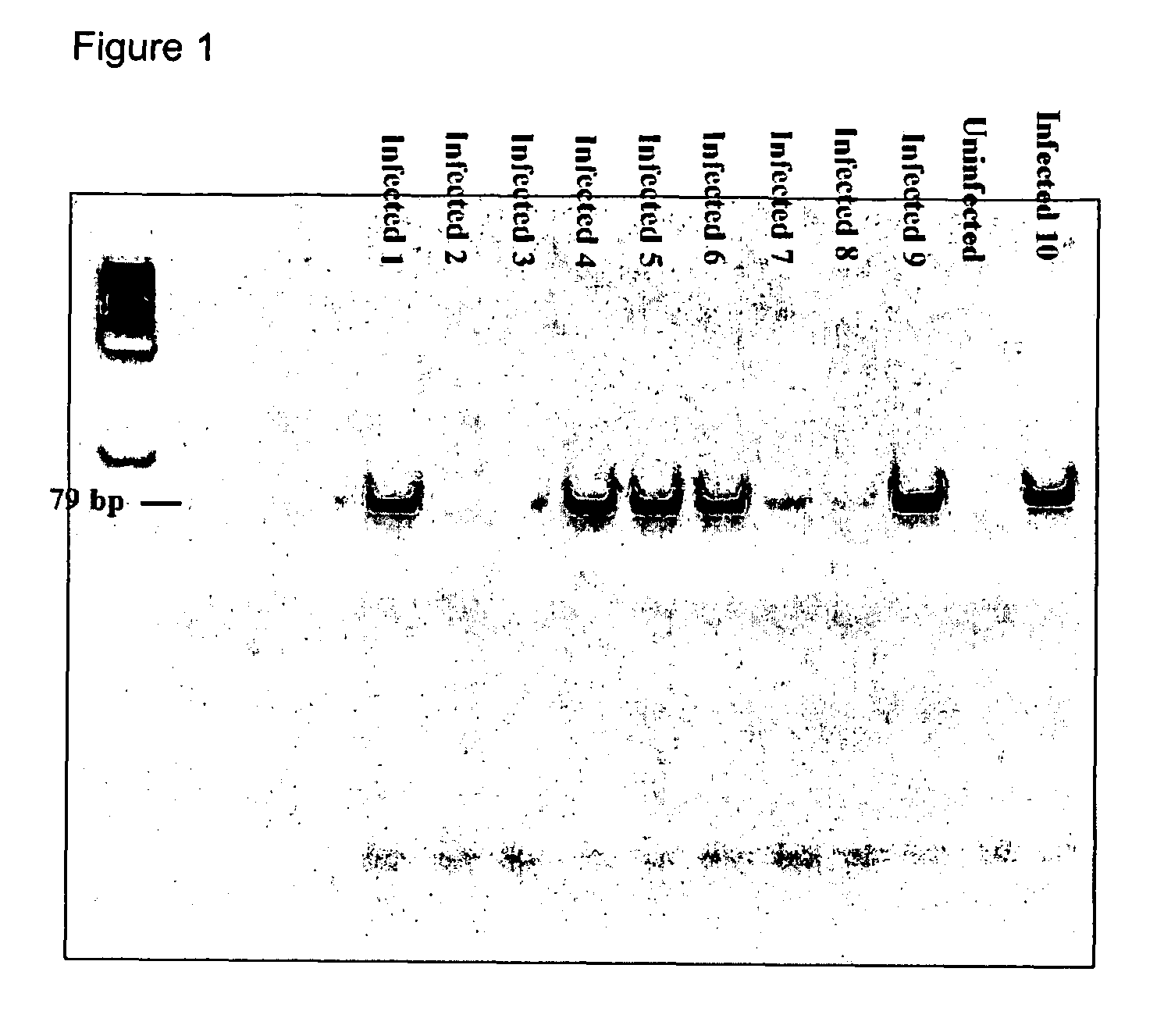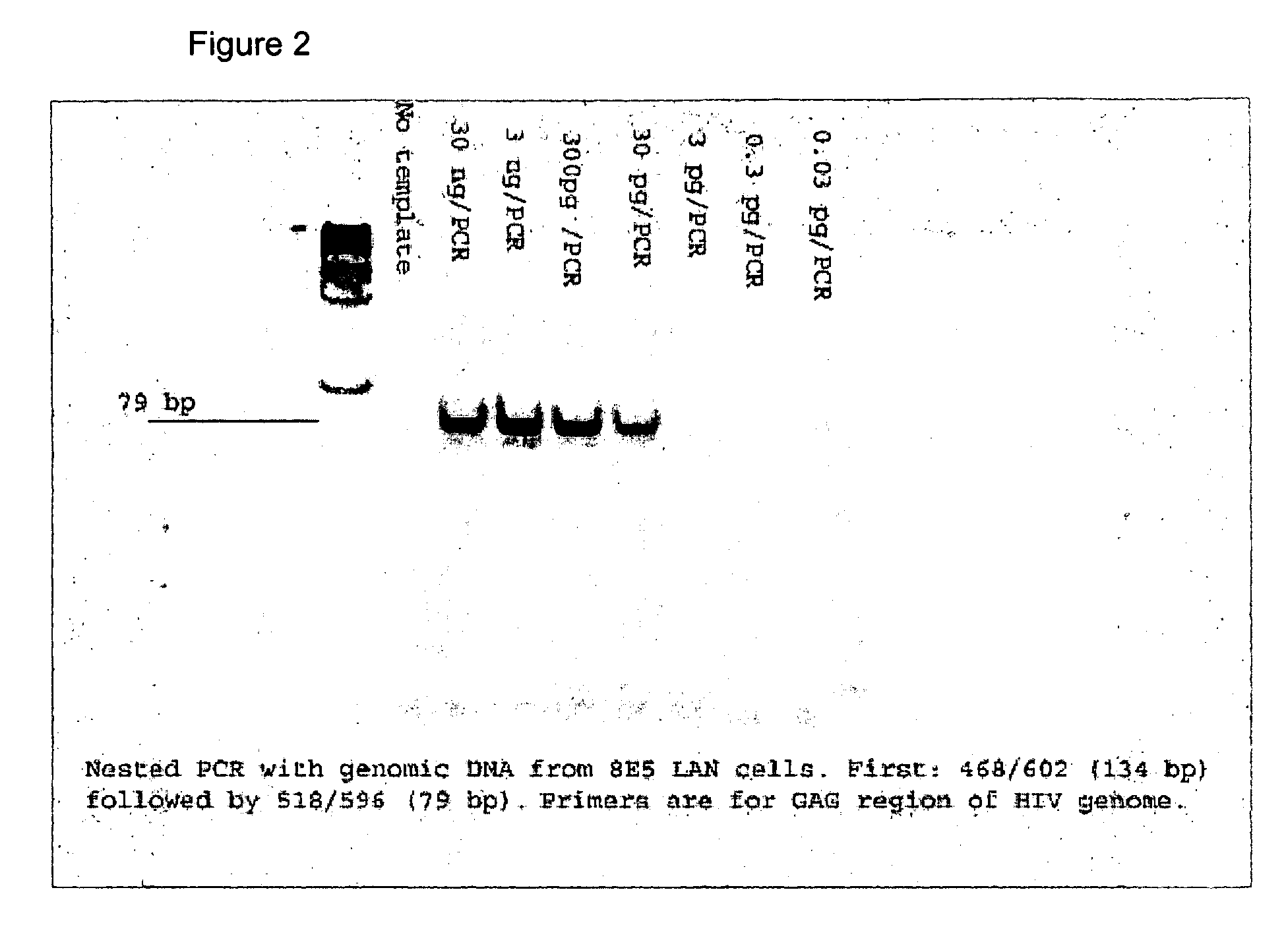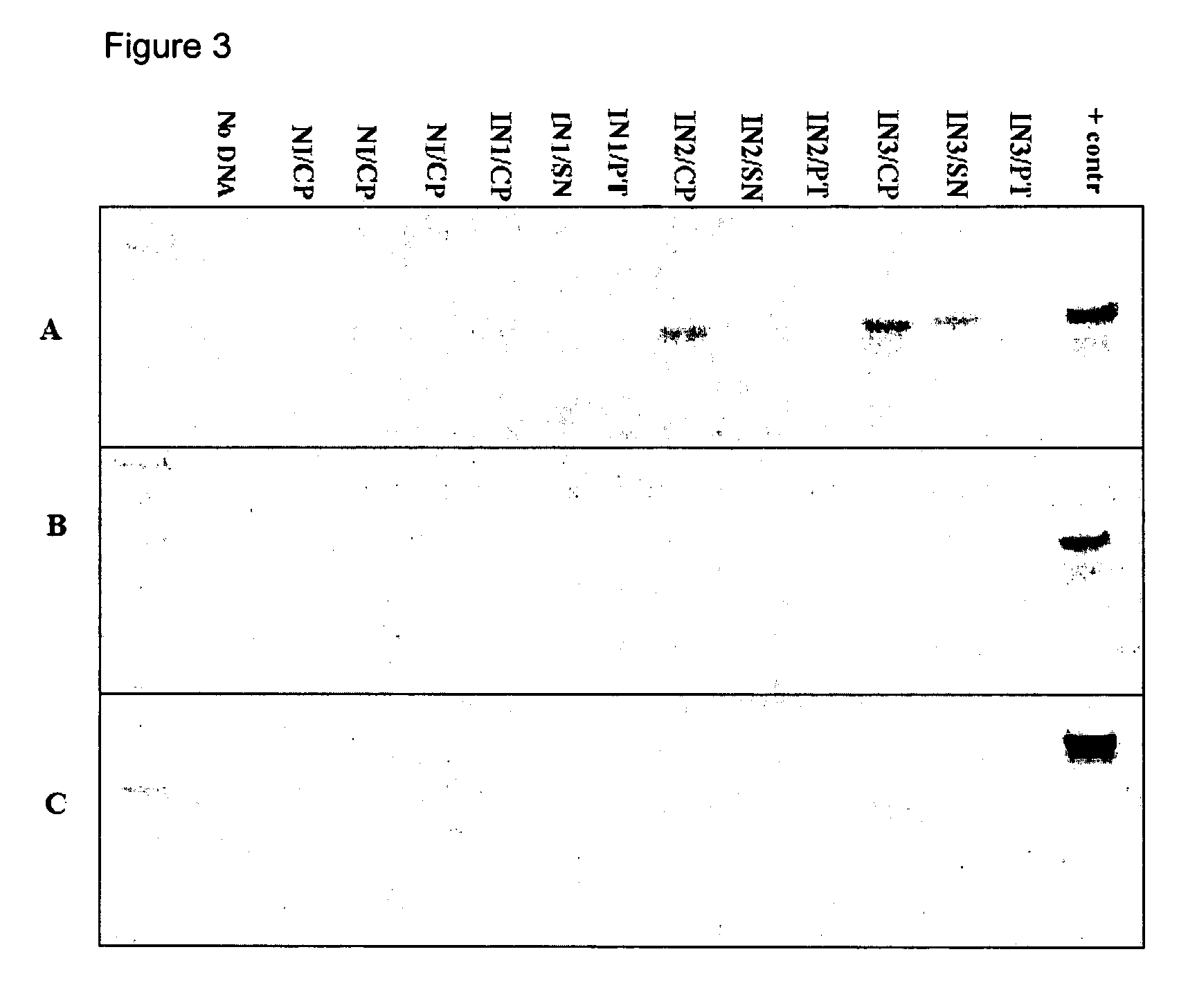Kits for diagnosis and monitoring of viral infection by analysis of viral transrenal nucleic acids in urine
a technology of transrenal nucleic acids and urine, which is applied in the field of molecular diagnosis of viral infections, can solve the problem that biological samples must be considered to be at risk
- Summary
- Abstract
- Description
- Claims
- Application Information
AI Technical Summary
Problems solved by technology
Method used
Image
Examples
example 1
Preparation of the Urine Samples
[0072]The method for the preparation of the urine samples and for the extraction of the DNA is described in PCT patent No. WO 98 / 54364, which is incorporated by reference in its entirety. All of the steps of the preparation of the urine samples and of the analysis of the transrenal DNA were performed at room temperature. Briefly, approximately 50-60 ml of urine samples were collected from each patient participating in the study. Within 30 minutes after collection, a solution consisting of 0.5M EDTA and 0.5M Tris-HCl, at a pH of 8.5 and at a final concentration of 10 mM, was added in order to inhibit the nucleases that might be present in urine samples. The EDTA has the effect of inhibiting the nucleases associated with divalent ions, while the high pH inhibits the acid nucleases.
[0073]The stabilized urine samples can be stored, in aliquots of 5 ml, at −80° C. In some instances, the samples were centrifuged for 15 minutes at 3500 g, and in this case th...
example 2
Extraction of the DNA from the Urine Samples
[0074]In this study, no commercial kits were used to extract the DNA. In fact, most of the commercial kits utilized for DNA purification are designed to isolate high-molecular-weight DNA, starting from various types of biological material.
[0075]Bearing in mind that transrenal DNA has a relatively low molecular weight (approximately 150-200 bp), fragments of this size can be isolated from the soluble portion of the urine, even if, in a majority of cases, the DNA is isolated from non-fractionated urine samples, because a portion of the Tr-DNA could be lost, due to the tendency of the Tr-DNA to co-sediment with cells and particulate material during the centrifugation of the urine sample.
[0076]The transrenal DNA was isolated by adding two volumes of 6 M guanidine isothiocyanate to 5 ml of whole urine, or to an equal volume of the fractions previously obtained through centrifugation. The resulting solution was mixed vigorously.
[0077]The soluble...
example 3
Design of PCR Primers
[0078]The primers for analysis of Tr-DNA based on the use of PCR were selected for two different sizes of the target fragment, i.e., one in the range from 60 to 120 bp and the other in the range from 250 to 400 bp. All of the primers were also compared against the complete human genome sequence. The primers were designed using the FastPCR software package (biocenter.helsinki.fi / bi / bare-1_html / oligos). The primers for the nested-PCR analysis were selected using the Primer 3 package, which is available at the frodo.wi.mit.edu / cg-1-bin / primer3 / primer3_www.cgi site, in such a way that the melting temperature of the internal, nested primers was not lower than that of the external primers.
[0079]The HIV primers were selected for recognition of all 9 of the Type M HIV subtypes. In accordance with the recently revised nomenclature (i.e., the 1999 Nomenclature Proposal: [hiv.lan1.gov / content / hiv-db / HTML / reviews / nomenclature / Nomen]), the HIV-1 M group subtypes are represen...
PUM
| Property | Measurement | Unit |
|---|---|---|
| temperature | aaaaa | aaaaa |
| pore size | aaaaa | aaaaa |
| pore size | aaaaa | aaaaa |
Abstract
Description
Claims
Application Information
 Login to View More
Login to View More - R&D
- Intellectual Property
- Life Sciences
- Materials
- Tech Scout
- Unparalleled Data Quality
- Higher Quality Content
- 60% Fewer Hallucinations
Browse by: Latest US Patents, China's latest patents, Technical Efficacy Thesaurus, Application Domain, Technology Topic, Popular Technical Reports.
© 2025 PatSnap. All rights reserved.Legal|Privacy policy|Modern Slavery Act Transparency Statement|Sitemap|About US| Contact US: help@patsnap.com



